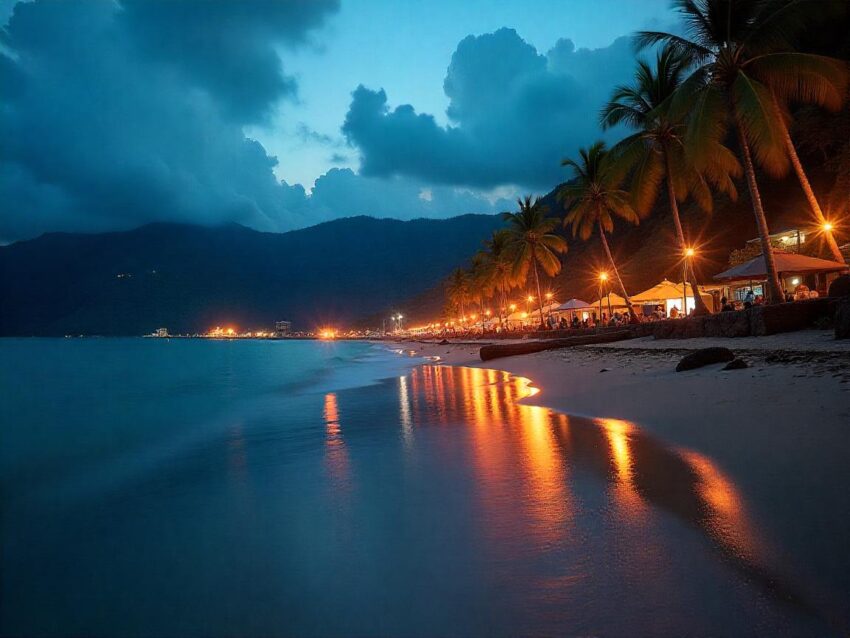Thursday, June 26, 2025

Indonesia has officially joined forces with global tourism heavyweights like the US, Peru, Canada, Ireland, Italy, and Norway in turbocharging the travel industry—and the results are nothing short of explosive. The archipelago is not just back on the map; it’s redefining what it means to be a powerhouse of tourism revenue generation.
Meanwhile, as the world watches, these nations are rewriting the rules of travel recovery. Something big is happening—numbers are skyrocketing, hotels are multiplying, and destinations once overlooked are now on every traveler’s radar.
Indonesia, bold and strategic, isn’t following the trend—it’s leading it. From Bali’s shifting dynamics to booming cities like Batam and Yogyakarta, the story unfolds fast.
So how did Indonesia rise to stand shoulder-to-shoulder with the US, Peru, Canada, Ireland, Italy, and Norway? What’s fueling this rapid tourism transformation? And why does it matter for the future of global travel?
The answers are in the details—read on.
Indonesia Joins Global Tourism Titans: How the Archipelago Is Turbocharging Travel in 2025
In 2025, Indonesia has emerged as a global tourism heavyweight, joining the ranks of countries like the United States, Peru, Canada, Ireland, Italy, and Norway—all of which are experiencing booming hotel development and record-breaking visitor numbers. This isn’t just a comeback—it’s a travel revolution.
Indonesia’s tourism sector has not only rebounded from the pandemic’s disruption but surpassed pre-2020 levels, setting new records for international arrivals and visitor spending. The industry is projected to generate IDR344 trillion this year alone—a 12% increase over 2019—and is on track to become one of Southeast Asia’s most powerful travel economies.
Like Canada’s high-end lodge expansions and Norway’s coastal hotel launches, Indonesia is riding a wave of strategic investments. Leading hospitality brands—both global and regional—are rapidly developing new properties across the archipelago. Hotel chains like Marriott, IHG, and Archipelago International are transforming underdeveloped cities into hospitality hotspots, while destinations like Batam, Yogyakarta, and Kolaka rise alongside Bali as international tourism draws.
Meanwhile, countries like Ireland and Italy are pushing luxury conversions and boutique hotel growth to meet surging demand, much like Indonesia’s pivot toward quality, culturally rooted travel. With Bali placing limits on new builds due to overtourism, the rest of Indonesia is being reshaped by sustainable expansion that spreads benefits beyond the usual tourist centers.
What sets Indonesia apart is its bold national strategy. Tourism is no longer a side note—it’s a central economic pillar, contributing 5.5% to GDP and supporting 14 million jobs. Government plans project that by 2035, tourism will create 17 million jobs and drive IDR1,897 trillion in value. It’s a long-term vision built on resilience, regional equity, and sustainability.
And Indonesia isn’t alone. Across the world, tourism giants are accelerating recovery. Peru and the U.S. are seeing robust inbound travel. Canada is drawing high-value eco-tourists to its wilderness resorts. Ireland is converting historic spaces into top-tier accommodations, while Norway is expanding capacity in the Arctic. These countries are united by one trend: strategic, scalable tourism that respects local culture while embracing global appeal.
As travelers seek deeper experiences and more diverse destinations, Indonesia’s momentum shows no signs of slowing. With smart policies, fresh infrastructure, and a deep cultural heritage, the archipelago is not just joining the global tourism elite—it’s leading them into a new era of connected, conscious travel.

Indonesia’s Travel Sector Surges in 2025—Breaking Records, Building Futures
Indonesia has catapulted itself to the top of Southeast Asia’s tourism leaderboard, eclipsing pre-pandemic benchmarks and setting a blistering pace for 2025. The archipelago isn’t just back—it’s rewriting the global tourism narrative, with record-breaking international arrivals and a powerful mix of strategic investments, job creation, and infrastructure development.
An Unstoppable Comeback in Full Swing
International tourism spend is forecast to hit IDR344 trillion in 2025—an astonishing 12% surge over 2019, according to new data from the World Travel & Tourism Council. This places Indonesia among the world’s fastest-recovering and most forward-moving visitor economies.
Fueling this surge is a well-orchestrated, aggressive push by both public and private sectors. The country’s Ministry of Tourism and Creative Economy is laser-focused on long-term, sustainable growth. Their plan? Balance economic gains with the protection of culture, communities, and the environment.
Tourism Now a Core Economic Engine
Tourism has now become a foundational pillar of the national economy. It contributes 5.5% to Indonesia’s GDP, supporting over 14 million jobs—a number that’s only expected to climb. In the next decade, tourism is projected to explode in value, with a 2035 market estimation of IDR1,897 trillion and a workforce impact of 17 million jobs.
These numbers aren’t just statistics. They signal a transformation. They show that tourism is not only back—it’s central to Indonesia’s economic resilience, national branding, and global competitiveness.
Rising Tensions in Bali as Overtourism Bites
Yet, success brings its own set of growing pains.
Bali, long the crown jewel of Indonesian tourism, is now grappling with the downside of international popularity. Overcrowding, excessive hotel developments, vanishing heritage sites, and traffic congestion are sparking community backlash.
The local government is taking action—halting new developments like hotels, villas, and nightclubs in overburdened areas. This bold policy move reflects a deeper national concern: how to maintain cultural integrity and ecological balance while feeding a tourism boom.
Opportunity Shifts Across the Archipelago
But Indonesia is not one island—it’s over 17,000 of them. And while Bali may be saturated, other destinations across the archipelago are emerging as investment hotspots.
Developers are swiftly redirecting capital toward these regions. Cities like Yogyakarta, Depok, Cimone, and Kolaka are witnessing rapid hotel infrastructure growth, signaling a decentralization of tourism that spreads economic benefits far and wide.
Hotel Brands Race to Expand Footprint
Leading the charge in this expansion is Archipelago International, with its Aston brand at the forefront. The company is aggressively building hotels and convention centers in multiple second-tier cities, tapping into rising domestic and regional travel demand.
New Aston projects are underway in Kediri, Malang, Morowali, Cimone, and Yogyakarta. Meanwhile, its Alana brand is expanding into Batam and Sentani—lesser-known destinations poised to become the next travel darlings.
Global Hotel Giants Double Down
International hotel chains aren’t sitting idle. They’re racing to capitalize on Indonesia’s tourism resurgence.
Marriott International is expanding with several marquee projects: a Marriott-branded hotel in Gelora, a Four Points by Sheraton in Pontianak and Bekasi, and a Westin resort on the island of Jalan Duyung off Batam. The group is also launching a Tribute Portfolio property in Nusantara, Indonesia’s ambitious new capital city.
IHG Hotels & Resorts is following suit. This year alone, it will unveil the 162-room voco Bandung Setiabudi, while also pushing forward with developments like the luxury Regent Jakarta, a Crowne Plaza near Komodo International Airport, and a new Holiday Inn resort in the capital.
Beyond Infrastructure: A Battle for Tourism Identity
This massive hotel boom is more than real estate—it’s a bid to shape Indonesia’s identity as a tourism superpower.
Each new hotel signals confidence in Indonesia’s future. Each international flag planted is a vote for its stability, allure, and investment climate. But the challenge lies in more than just growth—it’s about sustainable, intelligent growth.
Indonesia is racing against time to balance development with preservation. There’s growing urgency to protect local ecosystems, traditional communities, and sacred spaces even as tourism scales up.
Airlines and Airports Must Catch Up
As hotel inventory balloons, the pressure now shifts to Indonesia’s aviation and transport infrastructure. Airports in Bali, Jakarta, and Batam are experiencing a surge in passenger loads. Delays, bottlenecks, and capacity crunches are emerging issues that could stifle momentum if left unaddressed.
Airlines are already under pressure to increase frequencies, modernize fleets, and improve regional connectivity. Meanwhile, airport operators face mounting expectations to streamline customs, enhance passenger flow, and introduce digital innovation.
Indonesia’s air infrastructure must now evolve as fast as its tourism demand—or risk losing travelers to better-prepared regional rivals like Thailand, Vietnam, and Malaysia.
Local Travelers Fuel Domestic Boom
International tourists aren’t the only growth driver. Indonesia’s emerging middle class is also fueling a domestic tourism renaissance.
Weekend getaways, cultural retreats, and wellness escapes are trending among local travelers. This has led to a wave of demand for affordable yet high-quality accommodations in Tier 2 and Tier 3 cities, which hotel developers are now eagerly targeting.
This domestic shift adds resilience to the tourism sector, ensuring a balanced market even in the face of international travel disruptions or global downturns.
What Comes Next?
The message is clear: 2025 is Indonesia’s year to define the future of tourism in Southeast Asia. But success must be managed.
Indonesia must not only build—it must build wisely. Growth must be inclusive. Infrastructure must scale in sync. Communities must benefit. Sustainability must not be a footnote—it must be a headline.
As the world watches, the archipelago is poised to prove that tourism can be transformative, equitable, and enduring—all at once.
Tags: Bali, Bandung, Batam, Depok, Gelora, indonesia, Jakarta, Kediri, Kolaka, Komodo, Malang, Nusantara, Pontianak, Sentani, southeast asia, Tourism 2025, travel trends, Yogyakarta



